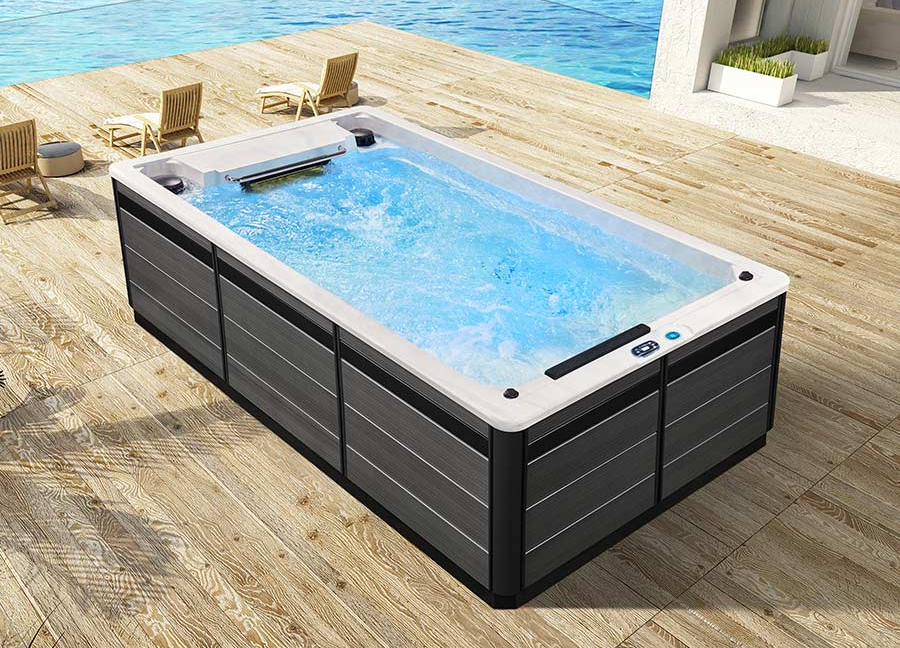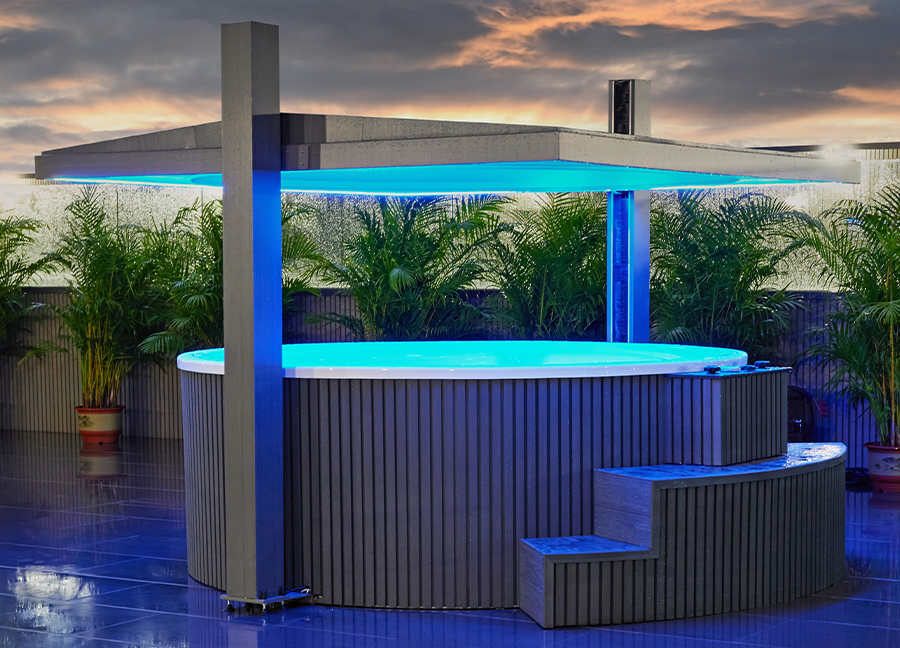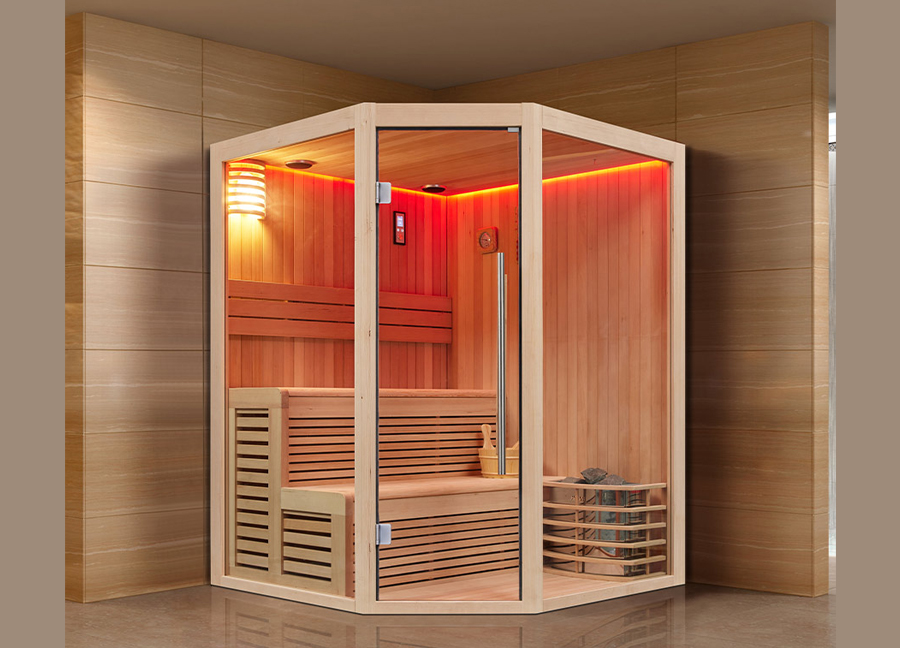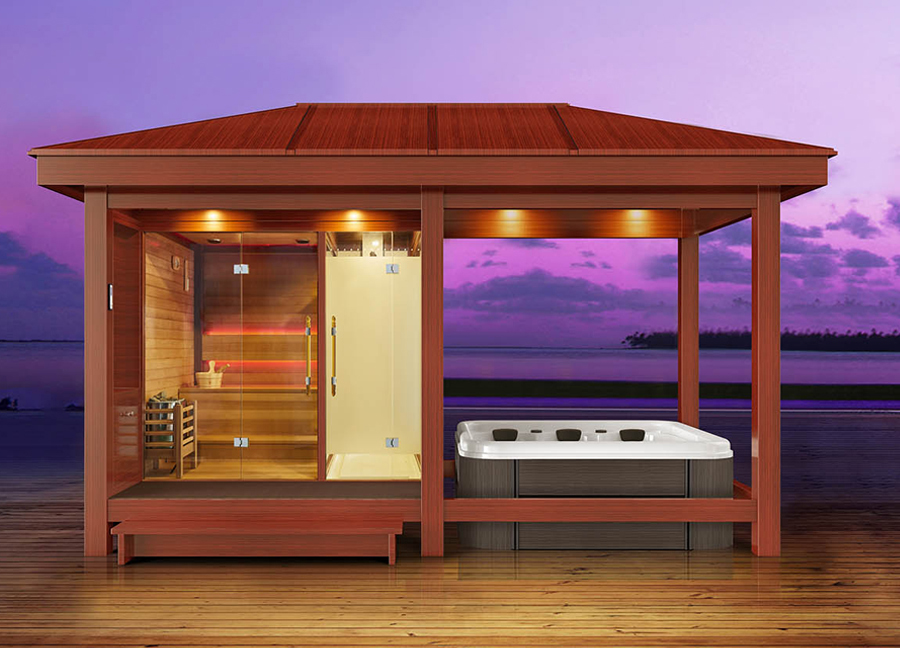In modern family life, more and more people are prioritizing health management and mental relaxation. As a wellness facility that combines relaxation, detoxification, and stress relief, outdoor steam saunas are widely popular in homes, apartment terraces, villa courtyards, and resorts.
However, when planning to install or use such equipment, many people have a very practical question: does an outdoor steam sauna room require electricity? This is a technical question involving many aspects, including the device's structural principles, energy requirements, safety systems, and ease of use.
This article will conduct an in-depth analysis of the core question of "Do outdoor steam saunas require electricity?" and strive to provide readers with a clear and concise answer through systematic, rigorous, and professional reasoning.

How does a steam sauna work?
A steam sauna differs from a traditional dry sauna in that it relies on a steam generator to heat water to boiling point, releasing a large amount of steam, quickly creating a high-temperature, high-humidity environment within a confined space. Its main features include:
· Indoor temperature is generally controlled between 40°C and 50°C;
· Relative humidity can reach over 90%;
· Usage time is typically 15 to 30 minutes;
· Requires continuous and stable steam generation and maintenance of a constant temperature.
As can be seen above, the core technology of a steam sauna lies in its "efficient and controllable steam heating system," and heating and control are essentially a typical electrically powered process.
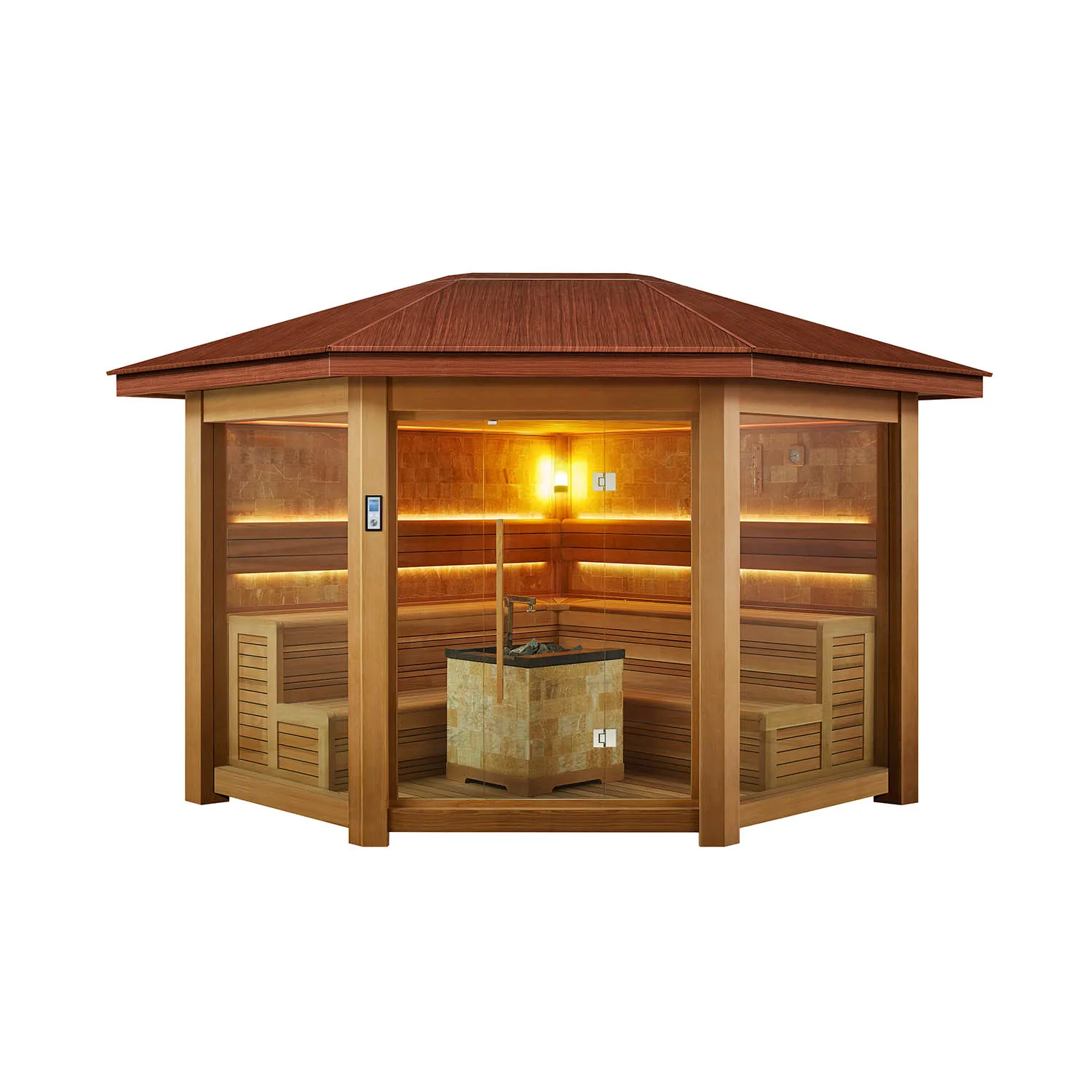
What are the main systems in an outdoor steam sauna room?
A complete outdoor steam sauna room typically includes the following components:
· Steam generator (primarily electric heating type);
· Thermostat and humidity sensor;
· Control panel;
· Water pipes and drainage system;
· Safety protection system (leakage protection device, overheating protector);
· Lighting and ventilation equipment.
It can be seen that from steam generation to temperature and humidity control to lighting and ventilation, almost every function requires electricity.
Why does an outdoor steam sauna room need electricity?
1. Steam Generators are Essentially Electric Heating Devices
The steam generator, the most critical heating device, typically uses a resistance-wire heating element to continuously boil water. It operates by using a 220V or 380V current to drive an internal heating element, rapidly heating the water and producing steam.
In commercial and residential steam saunas, the vast majority of steam generators are electric. This is due to the following advantages:
· Rapid heating;
· Precise control;
· Easy installation;
· Clean and exhaust-free;
· Intelligent control linkage.
Even though gas-fired steam generators exist, they are rarely used in outdoor residential environments due to safety, ventilation, and installation regulations. Therefore, electric heating is standard in outdoor steam sauna rooms.
2. The control system must be powered by electricity.
Modern outdoor steam saunas feature an intelligent control panel for:
· Starting and stopping the steam system;
· Setting temperature, humidity, and time;
· Controlling lighting and ventilation;
· Safety alerts (such as low water level or high temperature).
All of these operations require an electronic control system, operating in a closed-loop manner using sensors, actuators, and control circuits. Without power, the steam system cannot operate, adjust, or guarantee safety, directly impacting the user experience.
3. Auxiliary Systems Rely on Electricity for Safety
Outdoor steam sauna rooms operate in high-temperature and high-humidity environments, placing high demands on user safety. They are often equipped with the following electrical systems:
· Residual Current Device (RCD);
· Grounding System;
· Over-temperature Alarm System;
· Timed Power Off Control;
· Fan and Lighting Systems.
All of these safety-enhancing devices rely on electricity. If there is a power outage or voltage instability, the equipment will not provide stable service and may even pose a safety hazard.
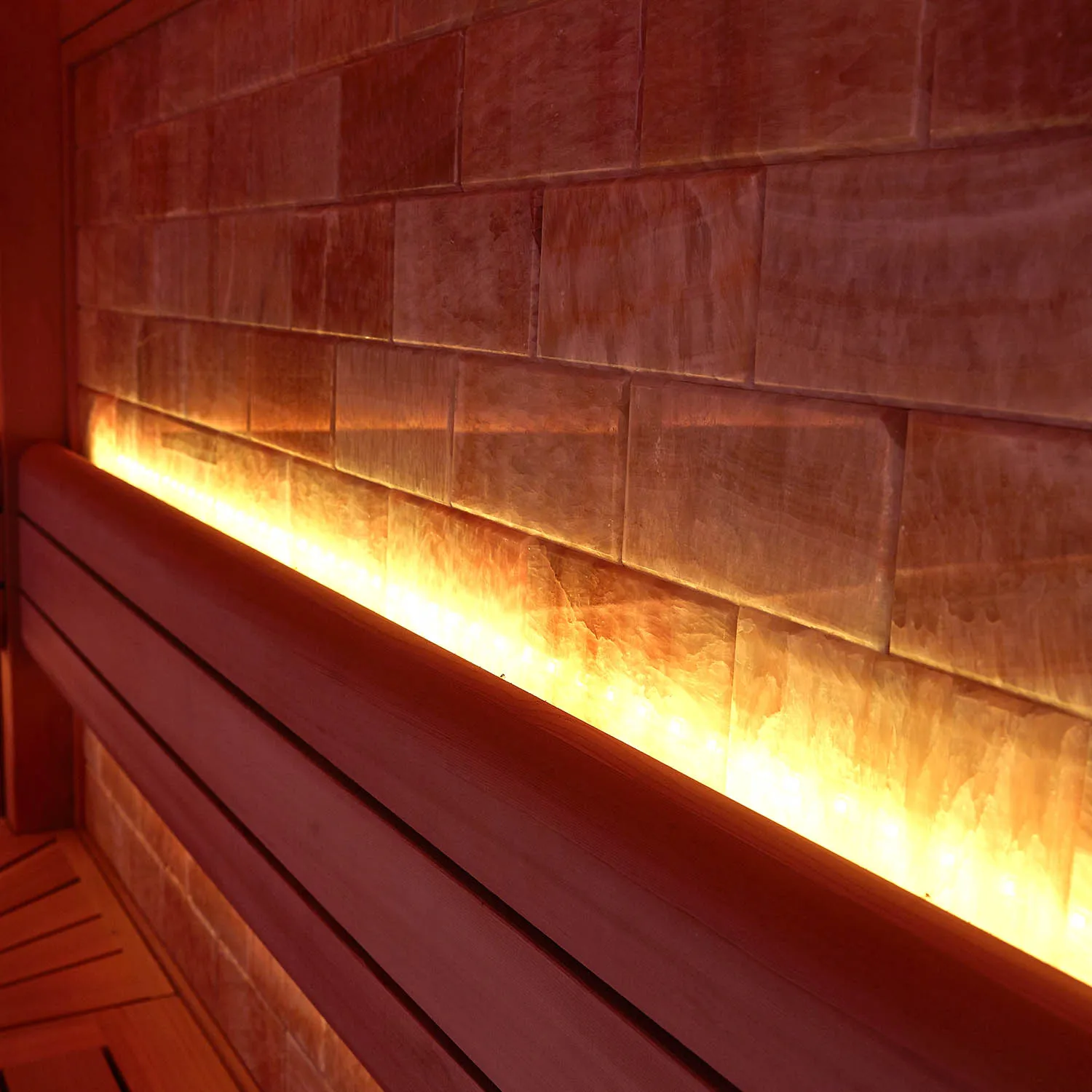
Are there steam sauna rooms that don't use electricity?
Many users wonder: Can electricity be replaced with alternatives like wood, gas, or solar? From a technical perspective, these alternatives present the following challenges:
1. Wood-fired heating is unsuitable for steam saunas
While wood stoves can be used in traditional dry saunas, in wet sauna systems, continuously and stably heating water to produce steam requires a controllable, sealed, constant-pressure heating system. Wood-fired heating methods struggle to achieve this control goal, and the installation and exhaust requirements in outdoor environments are extremely demanding, making them impractical and unsuitable for universal use.
2. Gas-fired steam engines have limited applicability
Gas-fired systems can indeed heat water, but they present the following challenges:
· Require specialized piping and ventilation design;
· Risk of gas leaks;
· Unstable gas pressure in cold climates;
· Inability to integrate with intelligent control systems;
· High management and maintenance costs.
Thus, while technically feasible, gas-fired steam systems are far less safe and convenient than electric-powered systems for the average household.
3. Solar systems currently cannot provide continuous steam output
While solar water heaters can provide domestic hot water, the continuous, high-intensity, and adjustable supply of boiling steam far exceeds their capacity. Unless equipped with a large, expensive heat storage system, it still requires electronic control. Therefore, solar energy cannot completely replace electric power.
Detailed Explanation of the Power Requirements of an Outdoor Steam Sauna Room
After understanding its reliance on electricity, users also need to understand the actual power requirements of an outdoor steam sauna room for proper installation and use.
1. Power Requirements
The power of the steam engine depends on the volume of the sauna room, generally as follows:
Sauna Room Volume (cubic meters) | Steam engine power (kW) |
| 2-4 m³ | 3-4.5 kW |
| 4-6 m³ | 6 kW |
| 6-8 m³ | 8 kW |
| 8-10 m³ | 9-10.5 kW |
For example, a typical household outdoor steam sauna room of 6 cubic meters requires approximately 6 kW of power. It typically uses a 220V power supply and requires a separate circuit breaker.
2. Electrical Requirements
· It is recommended to use copper cables with a diameter of at least 4 mm²;
· Configure a separate circuit to avoid sharing the same line with high-power appliances such as kitchen appliances and air conditioners;
· Install a leakage current protector (30mA sensitivity);
· Ground resistance less than 4Ω;
· Have a licensed electrician complete the wiring and connections during installation.
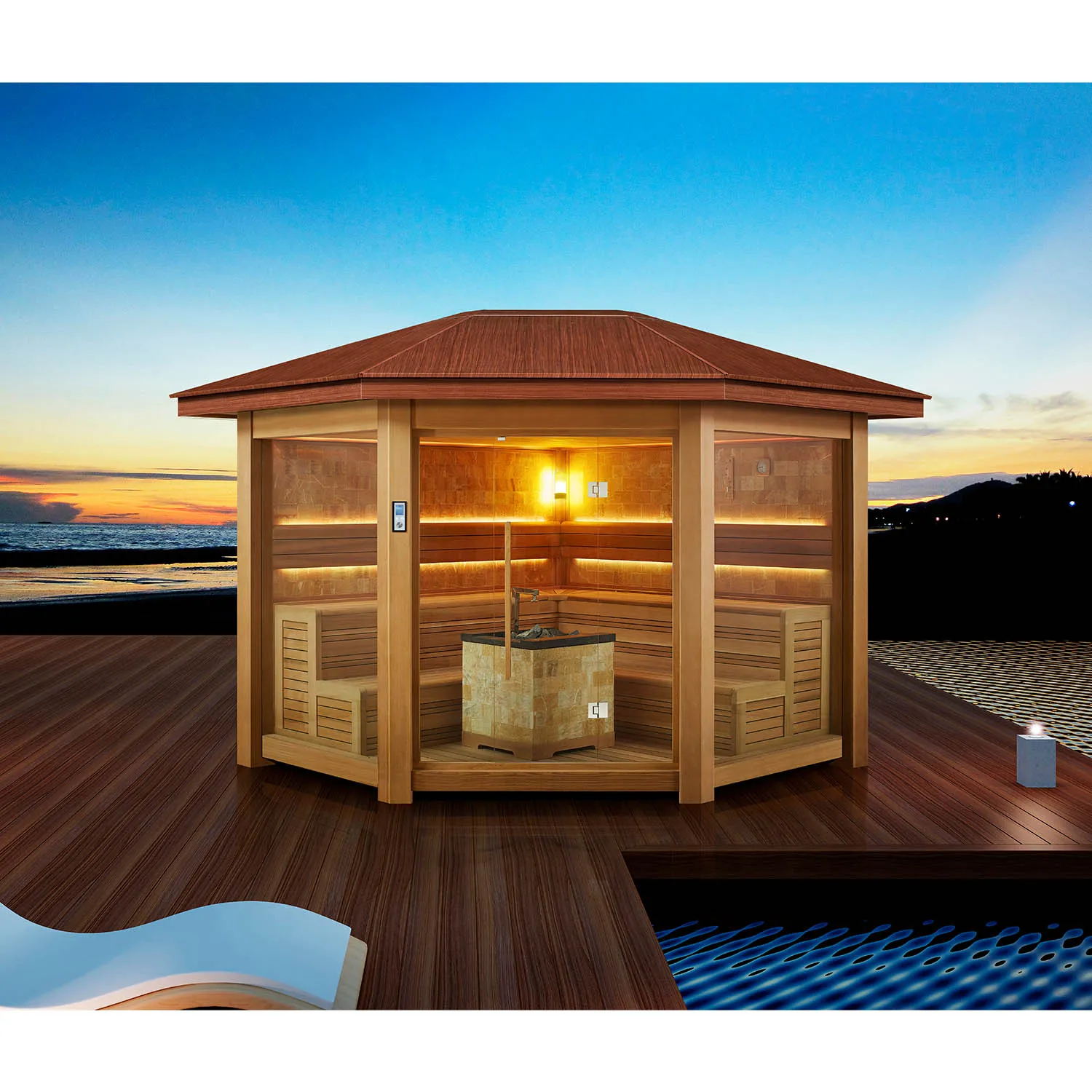
Will a power outage affect operation?
If a sudden power outage occurs during use, the outdoor steam sauna room will immediately cease operation, accompanied by the following:
· Steam supply interruption;
· Temperature control failure;
· Lighting and ventilation interruption;
· System jamming if no power-off protection device is in place;
· Accumulated water or residual hot steam may compromise safety.
Therefore, it is recommended that users consider a backup power supply or emergency power-off alarm during installation, especially when using during thunderstorms or in unstable areas.
Does an outdoor steam sauna room require electricity?
—The answer is yes: an outdoor steam sauna room must use electricity. Electricity is an irreplaceable, fundamental energy source, considering its operating mechanisms, core components, control systems, user safety, operational stability, and practical user experience. While gas or solar energy alternatives exist in theory, these technologies are complex, pose numerous safety risks, and offer limited controllability, making them far less practical and widespread than electric steam systems.
Therefore, when planning and constructing an outdoor steam sauna room, users must carefully consider power connections, cable layout, safe power distribution, and professional installation to ensure efficient, safe, and comfortable operation.
What Global Markets Do You Currently Supply To?
We actively supply to over 60 countries, including the USA, Canada, Germany, Australia, Saudi Arabia, and the UK. Our outdoor spas, swim spas, and steam bathrooms are sold under both our MEXDA brand and client OEM brands. If you’re targeting a niche market like luxury retreats or cold-climate homes, we can adjust specifications accordingly. As a China supplier, we also provide region-specific plug types, control systems, and certifications.

